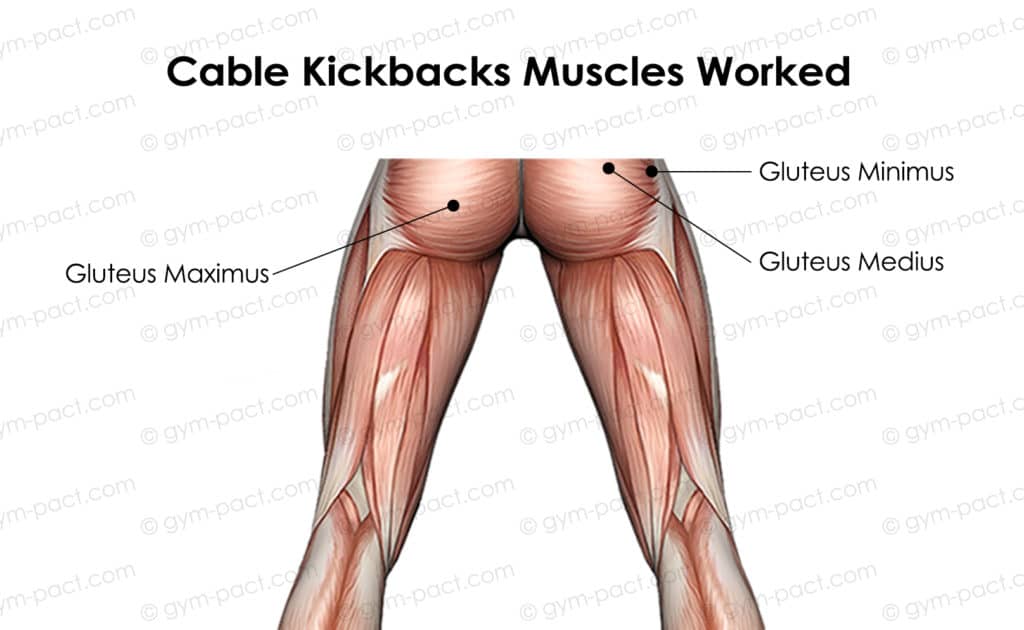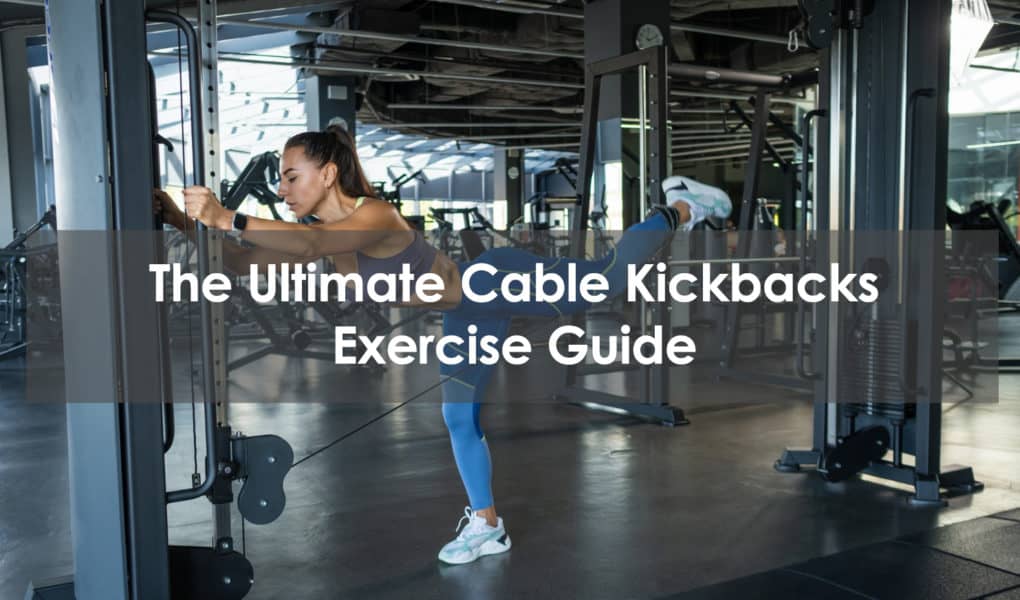Your glutes are the largest muscle group in your body. If you want to develop a powerful, athletic, muscular, and shapely body then you need to work them with the most effective isolation exercises that are available.
One of the best is the cable glute kickbacks. This exercise will move your glutes through their full range of motion and will simulate their natural range of motion without bringing other muscle groups into play.
Benefits of Cable Kickbacks
1. Glute Isolation
The cable glute kickback exercise allows you to target and isolate the glute muscles. This is quite unique when it comes to working the glutes as most exercises do not allow you to isolate that muscle group.
2. Bigger Butt
This glute exercise is an excellent movement for shaping the butt. At the same time that it develops your derriere, the cable glute kickback will make you a lot more powerful, especially through the lower body. Strong glutes will also help you to be stronger throughout your entire core area, including the erector spinae of the lower back.
3. Enhances Balance
The kicking action of the cable glute kickback movement requires a lot of stability and balance. As a result, this exercise will develop your coordination and balance.
Muscle Worked

The major muscle group that is worked in the cable glute kickback is the glutes. There are three gluteal muscles. The largest and most powerful of the three is the gluteus maximus. This muscle is also the one that is most visible on the body, covering the majority of a person’s butt. The fibers of the gluteus maximus originate high and then travel down diagonally away from the center of the body.
The job of the glutes is to extend the hip joint. In other words, it opens the hip joint, moving the upper thigh bone (femur) down and back. This is the action taken when you get up from a seated position and when you travel up a flight of stairs. The glutes also propel you forward when you move forward.
How to Perform Cabe Kickbacks
- Set the pulley on a single cable pulley machine to the level of your ankle. Now attach an ankle cuff to the cable end.
- Attach the ankle cuff to your left foot and stand in front of the machine facing it. Grab onto the machine frame for balance and bend at the waist so that your torso is at about a 45-degree angle.
- Pivot from the hip to bring your left leg back and up, coming up as much as you can.
- Squeeze your glutes tight in the top position, then lower under control to the starting position.
Tips
Perform this exercise slowly and under control; you do not want the momentum to take over and rob the glutes of the benefit of the movement. Your non-exercise leg should be firmly planted with just a slight bend in the knee. The moving leg should remain straight, with no bend in the knee.
Maintain the 45-degree upper body angle throughout the entire movement. Be sure to move through a full range of motion on every single rep and use proper form.
Common Mistakes to Avoid
1. Using Momentum
A common mistake people make when doing this exercise is that they perform it too fast which brings momentum into the action and leads to an incorrect form. This can be avoided by slowing down, not using too heavy a weight, and concentrating on only moving and squeezing the glute muscles.
Cable Kickbacks Variations
1. Dedicated Glute Kickback Machine
- Set the appropriate weight on the glute machine.
- Stand in the machine with your working foot resting against the footpad. The nonworking foot should be firmly planted on the floor.
- Kick the working leg back to full extension.
- Bring the leg back to the start position and repeat.
2. Donkey Kicks
- Get down on the floor on your hands and knees.
- Bring your right knee slightly forward and then kick it back and up to full extension.
- You can increase the intensity of this exercise by using ankle workout bands, ankle resistance bands, or ankle weights.
3. Resistance Band Kickbacks
- Attach a resistance loop band to an upright at the level of your ankle and secure the other end around your right ankle.
- Stand in front of the upright and hold onto it to balance. Now bend at the waist to bring your upper body down to a 45-degree angle.
- Without bending your knee, kick your right leg back and up as high as you can.
- Lower under control and repeat.
The Bottom Line
Cable machine glute kickbacks are one of the best exercises you can do to isolate your glutes, working and shaping your butt and making your body’s largest muscle group stronger. You can do this exercise with a cable machine in your home or gym.
But, you can also use a resistance band to simulate the movement of the cable glute machine at home. You should use higher reps, in the 15-20 range for your first few sets and then reduce the reps down to a low of 8 as you use a heavier weight. Do a total of 6-8 sets of this exercise.
Frequently Asked Questions
Do cable kickbacks grow glutes?
Yes, the cable glute kickback can grow the glutes, so long as you are using a heavy enough resistance and progressively increasing the weight that you are using. The glutes are potentially the strongest muscle group in the body so you need to use a substantial amount of weight to place enough stress on the glutes to force them into new growth.
Should I do glute exercises every day?
No, you should not do glute exercises every day. Just like any other muscle, the glutes need time to recuperate, recover and grow stronger. Having a glute workout every day will not provide them with enough time to do those things. Ideally, you should perform a glute training workout every 5 days.
Why does my back hurt when doing cable kickbacks?
The reason that your back hurts when doing cable kickbacks is that you are using momentum to get the weight up, which is involving your lower back. To avoid this, you should lower the weight on the cable machine weight stack and focus on isolating the glutes.







